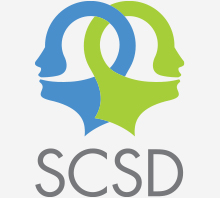Health services, including speech-language pathology services, are a human right. Yet accessibility to these services can be difficult, especially for Aboriginal communities. Thankfully, due to collaboration between the Kahnawake community and the clinical coordinators of the McGill School of Communication Sciences and Disorders (SCSD), first- and second-year clinical students have had the chance to work alongside students and families at both Kateri School and Kahnawake Survival School (KSS), and these students are learning how best to help these communities access the services they need.
Kahnawake placements
 As part of their education, SCSD clinical students take part in clinical placement to gain hands-on experience and competency in the field. A number of student clinicians have been given the opportunity to be supervised by speech-language pathologists (SLPs) working in Kahnawake, an Kanien’kehá:ka community south of the island of Montreal. Fayden Bokhari is a SLP who has been serving the Kahnawake community since 2016. She notes that her favourite part about working at Kateri School has been the connections formed with its committed students, parents, and colleagues. In addition, working within an interdisciplinary team comprising of occupational therapists, psychologists, counsellors, resource teachers, art therapists, and behaviour technicians has been beneficial for her growth as a clinician.
As part of their education, SCSD clinical students take part in clinical placement to gain hands-on experience and competency in the field. A number of student clinicians have been given the opportunity to be supervised by speech-language pathologists (SLPs) working in Kahnawake, an Kanien’kehá:ka community south of the island of Montreal. Fayden Bokhari is a SLP who has been serving the Kahnawake community since 2016. She notes that her favourite part about working at Kateri School has been the connections formed with its committed students, parents, and colleagues. In addition, working within an interdisciplinary team comprising of occupational therapists, psychologists, counsellors, resource teachers, art therapists, and behaviour technicians has been beneficial for her growth as a clinician.
What should clinicians keep in mind?
Clinicians who are interested in working alongside these communities will need to be prepared to enter in with the necessary empathy and humility. “I listen with compassion and openness to the experiences and perspectives of individuals affected by intergenerational trauma,” Fayden said, “allowing them the space and safety to express their feelings and views in my interactions with them.” As part of the MSc(A) program, second-year clinical students receive education on how to provide intervention to different cultural and social groups, and broadly, how to conduct themselves as clinicians with an awareness of privilege and power dynamics. This critical aspect of the program teaches students to keep in mind how clients may come from different backgrounds and often have something to teach the clinician themselves. In essence, learning is not a one-way street where one party holds the power. The practicum students at Kahnawake would be expected to practice this mentality, as the client-clinician relationships in this community flourish when they are developed as cooperative, collaborative, and based in trust. 
Attitude is everything
If clinicians come in with an open attitude, they would be welcomed into communities such as Kahnawake. Curiosity about the culture and its associated values, traditions, practices, and world views are welcomed and appreciated. Fayden regularly takes part in traditional festivals and activities celebrated at Kateri School in order to stay involved. Dwayne Stacey, a social studies/options teacher at KSS, says that creating a bond with the individuals within the community is essential. It is not enough to simply come in and conduct assessments and interventions. A clinician needs to show curiosity towards and a desire to experience local traditions, as Fayden noted. Dwayne also noted the importance of attending social events and being friendly with students and staff. Getting to know the people that make up the community, and not just conducting oneself as an independent clinician and treating people like a monolith, goes a long way towards establishing relationships that will have a lasting impact.
Student experiences
These aspects have been noted by the student clinicians themselves who were fortunate to further their knowledge and gain experience in Kahnawake. For example, two student clinicians got to participate in the celebration of the inauguration of KSS. In addition, students at KSS had the chance to further their knowledge about harvest season that takes place every fall, which is of great importance for the Kahnawake community. Another valuable experience noted by clinical students at both Kateri School and KSS was the trip they took alongside their supervisors to the Kanien'keháka Onkwawén:na Raotitióhkwa Language and Cultural Center. This gave them the opportunity to learn about the history of Canada’s Indigenous communities, the impacts of colonialism, and the values and traditions that are preserved and celebrated today. Students will definitely be benefited from more opportunity to work with Indigenous communities or other minority groups. The placement in Kahnawake and KSS represented an initial step in the direction of growth for education in the field.

